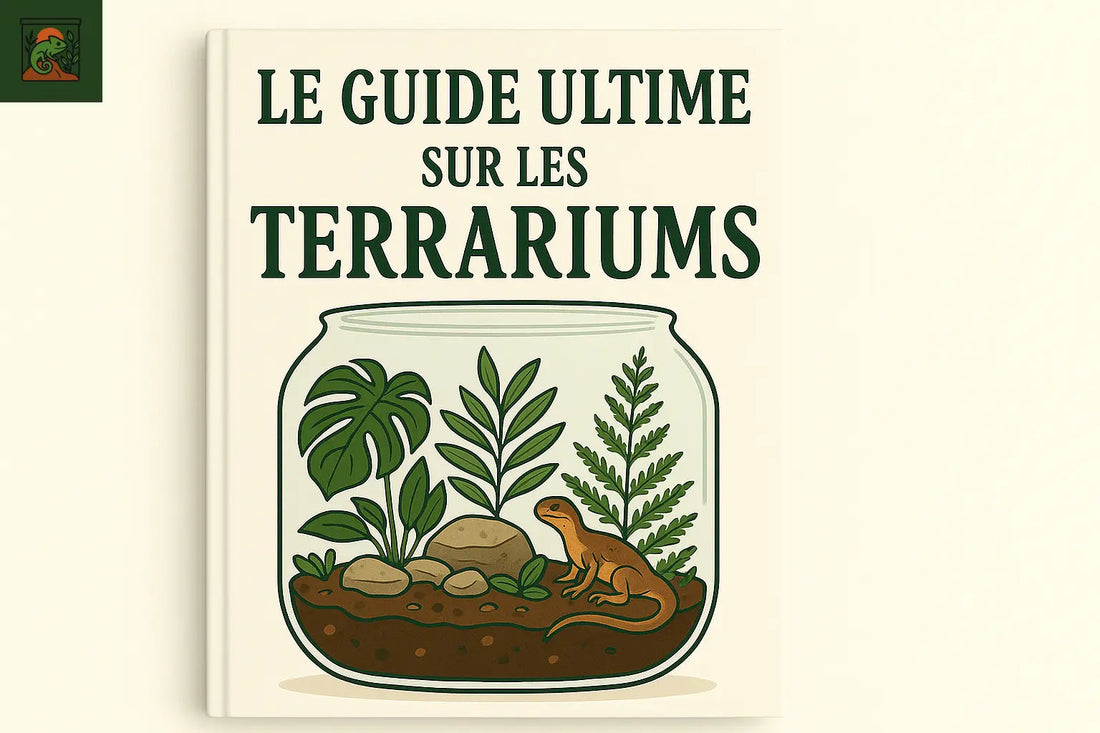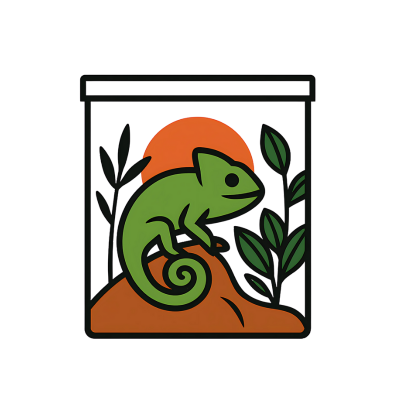
Terrariums, The Ultimate Guide
Creating a Terrarium: The Simple Guide to Getting Started (2025)
Welcome to le-terrarium.com , your passionate reference for everything related to terrariums! Whether you're a fan of reptiles, amphibians, or insects, this article gives you the essential basics for creating a custom-made, aesthetically pleasing habitat that's perfectly suited to your little ones.
1-- What is a Terrarium ? Miniature Nature at Home
A terrarium is more than just a container filled with plants or animals: it's a miniature ecosystem, carefully designed to replicate the natural conditions of a specific environment. It can evoke the humidity of a tropical jungle, the dryness of an arid desert, or the coolness of a temperate forest.
In concrete terms, a terrarium is an enclosed or semi-enclosed space made of glass or acrylic, designed to maintain precise parameters of temperature, light, and humidity. It can accommodate both exotic plants (such as ferns, mosses, orchids, or succulents) and fascinating animals such as reptiles, amphibians, or insects.
Every element—from the substrate to the decor, including the ventilation and lighting systems—plays a crucial role in recreating a balanced natural habitat. The goal: to provide its occupants with a healthy and fulfilling living environment, while creating a vibrant, aesthetically pleasing, and soothing decorative object.
Terrariums are also a great way to reconnect with nature, understand ecological mechanisms, and observe life cycles on a small scale. Whether you're passionate about biology, a decoration enthusiast, or simply curious, a terrarium will offer you an immersive and educational experience at the heart of life.

2-- The 3 Types of Terrariums to Know
🟢 The Different Types of Terrariums: Choosing the Right One According to Your Needs
🔸 Glass Terrarium: Clarity and Elegance
Glass terrariums are a classic and preferred choice among enthusiasts due to their perfect transparency. They allow you to admire your animals and plants from all angles, making them an excellent decorative item.
Thanks to its smooth surface, glass is very easy to clean and does not retain odors or bacteria. It is particularly recommended for tropical reptiles (such as geckos, anoles, or poison dart frogs) or desert reptiles (such as bearded dragons), as it allows good control of light and humidity with the right equipment.
⚠️ Only drawback: it is heavy and fragile, so handle with care.
🔸 Acrylic Terrarium: The Lightweight and Durable Option
The acrylic terrarium, often used for small reptiles, amphibians or insects, has several advantages:
- Lightweight: ideal if you have to move the terrarium often.
- Impact resistance: Unlike glass, it does not break easily, making it a safe choice for homes with children or pets.
- Thermal insulation: it retains heat better, which helps limit temperature variations – a real plus for sensitive species.
However, acrylic can scratch more easily than glass and tends to yellow over time if exposed to UV light without protection.
🔸 Open or Closed Terrarium: Adapt the Environment
Depending on the species you are housing, the type of opening in your terrarium is a crucial parameter.
- Open Terrarium
Ideal for arid or xerophilous species, such as certain desert lizards, fireflies, praying mantises, or even succulents. Air circulates freely, limiting condensation and preventing excess humidity.
👉 Best used in dry environments, or when high humidity is not required.
- Closed Terrarium
Designed to maintain a warm and humid atmosphere, this type of terrarium is perfect for tropical species, such as tree frogs, chameleons, phylliums or tropical plants (fittonias, mosses, ferns).
It makes it easier to stabilize the indoor microclimate and limits evaporation, which reduces daily maintenance.
⚠️ However, be careful to manage ventilation properly to avoid mold.

3-- How to Choose the Ideal Terrarium?
✔ Sized to Fit Your Species
An adult chameleon will not have the same needs as a stick insect. The more active or larger your pet, the more generous the space will need to be.
✔ Natural Behavior
Does your pet climb? Does it dig? Is it nocturnal? These behaviors determine the shape and layout of the terrarium: tall, wide, deep, with hiding places or branches.
✔ Climate Reproduced
Each species has an ideal microclimate:
-Moist tropical (e.g. dendrobate)
-Hot desert (e.g. leopard gecko)
-Temperate forest (e.g. salamander)

